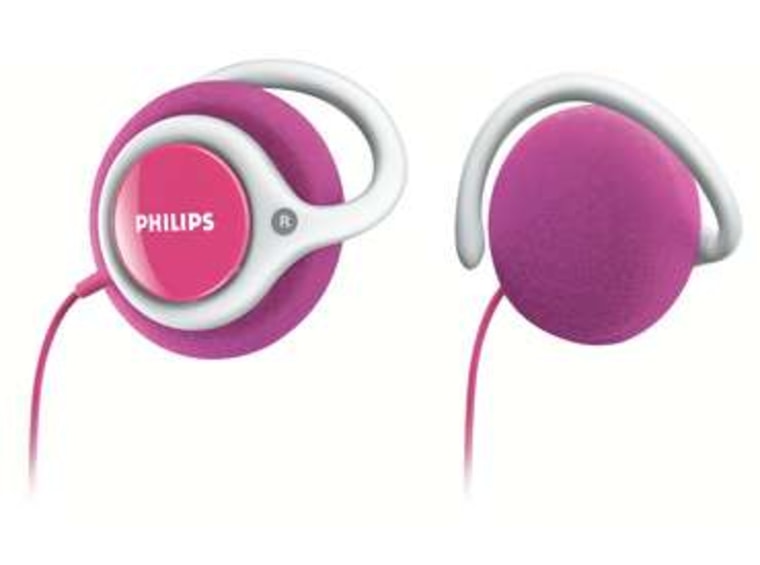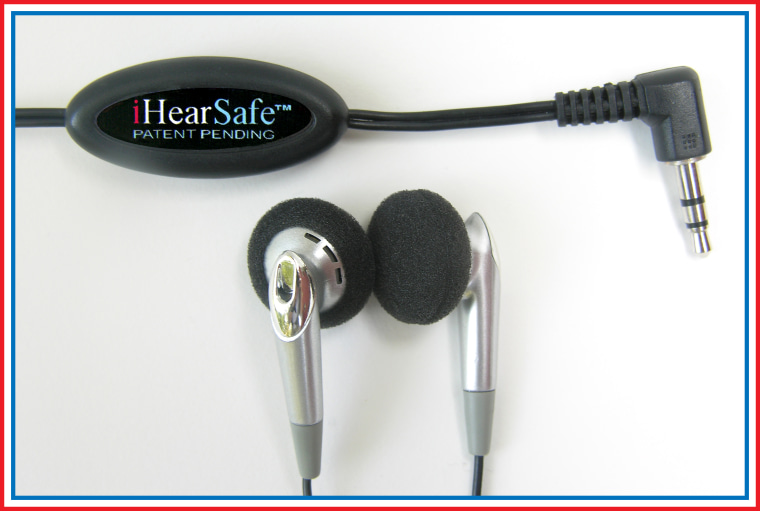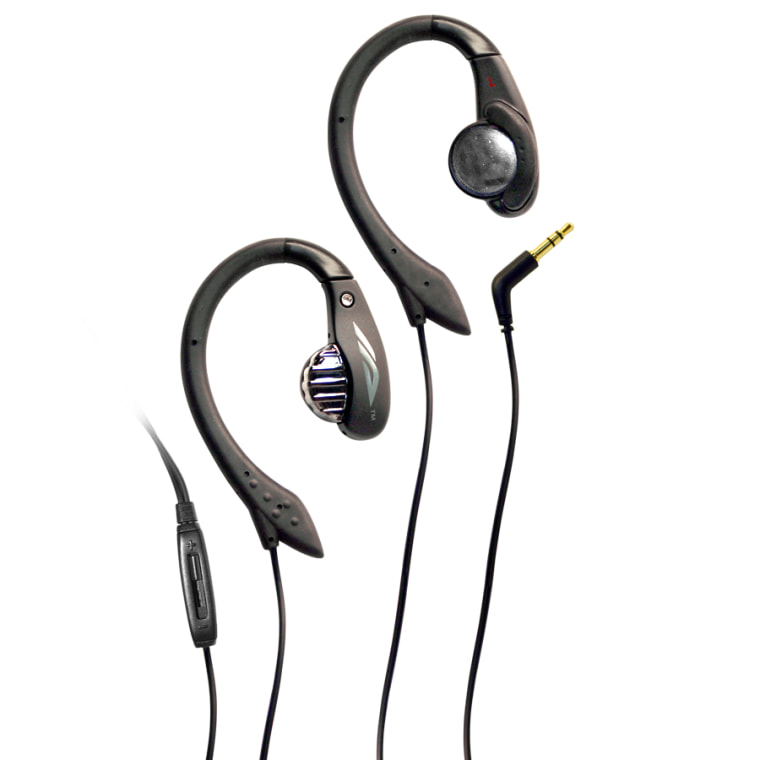Christine Ingemi, with four children under the age of 11, faced a future of hearing music in quadraphonic sound, even though her kids wore earbuds with their iPods. They played their music loud, and she could easily hear it.
“I had the same battle every mother has, always trying to tell them to turn it down,” she said. “I just couldn’t really do anything to prevent it.”
So the New Hampshire mom got mad — and got an idea at the same time. She came up with earbuds that limit the volume from the music player to a safer level. Three thousand miles away, in California, another parent, Ken Wright, came up with a different concept for earphones after being concerned about his 13-year-old daughter’s hearing when she cranked up her iPod.
Ingemi and Wright’s products are among several options now available for safer listening in response to concerns about potential hearing damage, especially in children, from iPods and other digital music players, as well as portable DVD and game players.
“In the 6- to 19-year-old age range, there is increasing prevalence of hearing loss, and as many as 12 percent of kids in that age range have measurable hearing loss,” said Alison Grimes, president of the American Academy of Audiology, and head of UCLA Medical Center’s Audiology Clinic.
“If you take a personal music device with an earphone, one that sits fairly deeply down the ear canal, we know that the sound pressure levels at the eardrum can be unacceptably high, depending on how loud the volume is turned up,” she said.
“People prefer to listen to music at loud levels; that’s very common. Unfortunately, the ear doesn’t have the tolerance to take that for long periods of time.”
Rockers and Baby Boomers who lived through The Concert Years have learned that. But those with younger ears have not.
Different approaches
Noise-canceling headphones, such as those made by Bose, Sony or Panasonic, can be one solution, but are often expensive.
Recently, various companies have announced new headphones for children that promote safer listening.

Sony is coming out with its MDR-222KD headphones with more “moderate” volume levels than headphones adults would use.
Philips has a set of children’s headphones that include a volume lock for parents to set.
Another company, Safe ‘N Sound, has a set of ear hooks for $30 that have acoustic chambers “that direct the sound waves away from the eardrum by facing the speaker elements away from the ear canal,” according to the company’s Web site.
In 2006, Ingemi came up with iHearSafe earbuds ($20), which have a built-in volume limiter to keep the maximum audio level below 85 decibels.
“Audiologists have said at 85 decibels after 8 hours, hearing damage can begin,” Ingemi said.
Her product may be a good solution for younger children, who aren’t yet used to playing their music full-blast, especially “if you train them at an early age,” she said.
She realizes that it’s harder when children are older, and recalls her own efforts, from putting duct tape on the volume controls to downloading software from Apple that limits the iPod’s volume. Of course, she said, her children figured out how to undo that.
“They’re tech-savvy, so they knew how to delete the parental controls,” she said.
Ingemi considers volume control a safety issue, much like seat belts and bicycle helmets.
“It took us awhile to get used to those things,” she said. “We’re trying to get kids while they’re young, so that they’re used to listening at a safe level, and they recognize that it’s a safe level for the future.”
Being able to hear other sounds
Ken Wright’s invention, AirDrives, which went on the market in 2007, come in different sizes for children and for adults. The earphones sit in front of the ear canals, leaving the ears open, “unlike other earphones and earbuds that cover your ears,” he said. AirDrives retail for $80, for adults, and $50 for a children's pair.
The earphones create “the kind of sound you’d get from a home or car stereo, where you hear your sound coming from around you, versus from inside your head,” said the San Diego man.
“I wanted to develop something for my daughter that wouldn’t hurt her ears, and I also wanted to develop something for me that was a better listening experience.”
And, there’s a third aspect Wright had in mind when he designed AirDrives: making it possible for the listener to still hear what’s going on around him, especially while out in traffic or at the office.
With AirDrives, he said, “you can listen and interact socially with others, as well as remain aware of your surroundings.”
That has become an issue. In New York last year, a state senator unsuccessfully sought legislation that would have made it illegal to cross the street while using devices such as iPods and cell phones. He was spurred to do so, he said, after three pedestrians listening to their electronic devices were struck and killed.

Two years ago, USA Track and Field banned runners from carrying digital music players during its marathons.
“When somebody says, ‘Hey, get out of my way,’ or there’s an announcement, you can’t hear those words” with regular earbuds, said Wright.
Grimes, of the American Academy of Audiology, applauds the product efforts to provide safer and saner sound.
The academy, she said, is concerned enough about the impacts of what is called NIHL, noise-induced hearing loss, that it launched a Web site, TurnItToTheLeft.com, earlier this year to offer education and guidance to youths, parents and teachers.
“What we’re talking about with personal music devices is that gradual chipping away at the cochlear hair cells, the little sensory cells in the inner ear, and that’s where the damage gets done when there’s exposure to loud noises,” she said.
“What we don’t know for each person is what their individual risk is, until after the damage has been done. Some people are more susceptible to NIHL than others, and we don’t know all the factors that go into that susceptibility.”
Audio common sense
There are some general guidelines for audio common sense, she said.
“If you’re going to listen to a personal music device, take out your earphones for five minutes every half hour, and give your ears a rest. That gives your cochlear hair cells time to get back to normal, to rejuvenate themselves. Break up the listening.”
Also, she said, “if a parent can hear their child’s music leaking out of the earphones from 3 feet away, it’s probably too loud.”
It’s not just rock ‘n roll that needs volume control.
“The ear doesn’t care what the noise is, if it’s intense enough and if the exposure is for a long enough duration,” Grimes said.
“There are studies that show symphony musicians who play Beethoven have NIHL. So, the ear doesn’t care. It’s all about how intense is the sound in the eardrum, and for how long a period of time is the ear exposed” to that sound.
“One of the difficult things about NIHL is that it’s really insidious, it comes on gradually, painlessly, and it’s often not detectable in the early stages,” she said. “And by the time it’s detectable, it’s a problem. So, it’s really better to work very hard to prevent it in the first place.”
